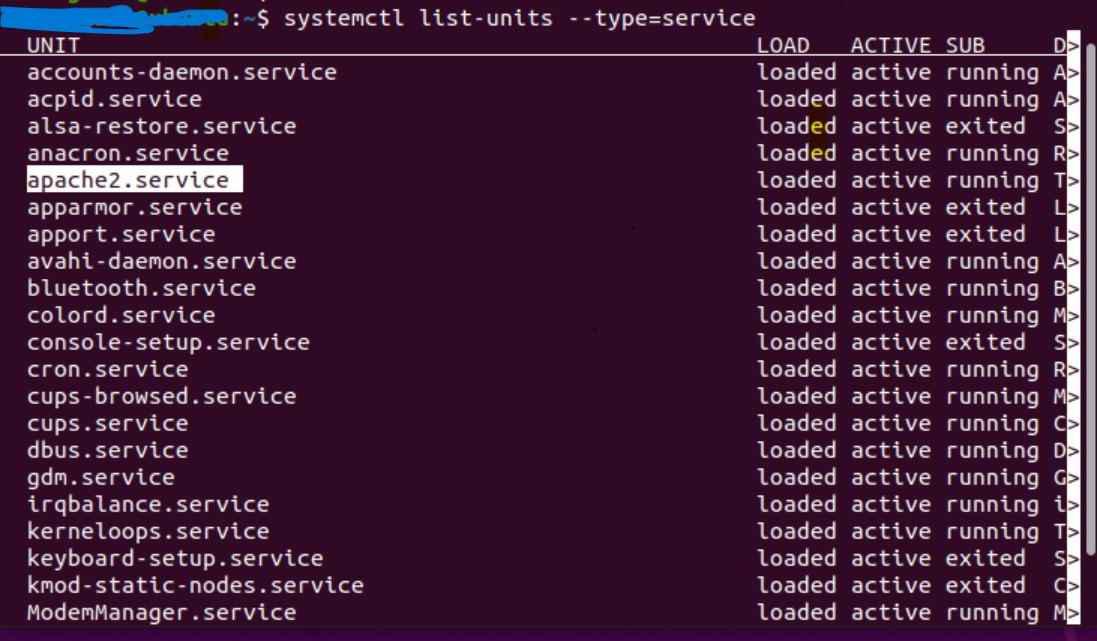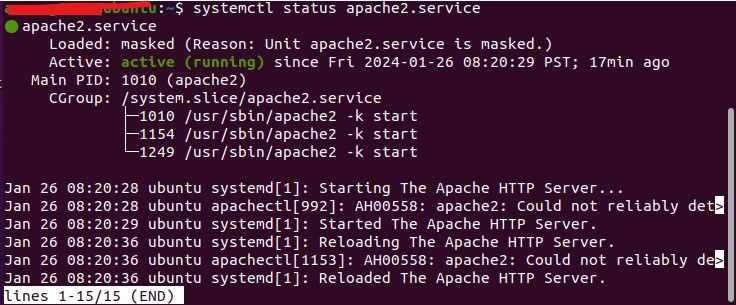
|
|
Systemd is a system and service manager for Linux operating systems, providing a range of functionalities for managing system processes. In some cases, you may want to hide or disable a systemd unit to prevent it from starting automatically. This process is known as “masking” a systemd unit. In this article, we’ll explore the steps to mask a systemd unit in Linux. What is Systemd?Systemd is a suite of system management daemons, libraries, and utilities designed to centralize the management of system services. It replaces the traditional System V init scripts and provides features like the parallel startup of system services, on-demand activation of daemons, and dependency-based service control. Systemd UnitsSystemd units are configuration files that describe how a service, device, mount point, or other aspects of the system should be managed by systemd. Units are defined with files having extensions like .service, .socket, .mount, etc. They are located in directories such as /etc/systemd/system/ or /usr/lib/systemd/system/. Method 1: Masking a Systemd UnitMasking a systemd unit means making it impossible to start the unit, either manually or during system boot. This is achieved by creating a symlink from the unit file to /dev/null. The following steps demonstrate how to mask a systemd unit: Step 1: Identify the Unit Determine the systemd unit you want to mask. It could be a service, socket, target, etc. You can list all units using the systemctl list-units command or focus on specific types using systemctl list-units –type=TYPE. Use the following command: systemctl list-units --type=your_unit_type This command lists all active units of the specified type (your_unit_type). You need to replace your_unit_type with the actual type of the systemd unit you want to mask, such as ‘service‘, ‘socket’, ‘device’, etc. For example: systemctl list-units --type=service Output:  Identify the service to mask The command entered in the terminal listed all the active services in the system. Step 2: Mask the Unit Now, create a symbolic link to /dev/null in the systemd unit directory. This will effectively disable the unit. Use the following command: sudo systemctl mask UNIT_NAME This command creates a symbolic link ‘(symlink)’ from the systemd unit file to ‘/dev/null’, effectively disabling the unit. Replace your_unit_name with the actual name of the unit you want to mask. For Example: sudo systemctl mask apache2.service Output: Mask the service By the command mentioned above we are masking apache2.service which has successfully created symlink. Step 3: Verify the Masking: Confirm that the unit is masked by checking its status with systemctl status. The output should indicate that the unit is “masked.” Use the following command: systemctl status UNIT_NAME The output should show something like “Loaded: masked” if the masking was successful. For example: systemctl status apache2.service Output:  Check Status and Verify By entering the above command we can clearly see int the output that the service has been masked successfully. Step 4: (Optional) Unmasking the Unit: Ensure that the unit is masked by checking its status. sudo systemctl unmask UNIT_NAME This command checks the status of the specified systemd unit (UNIT_NAME). It helps you verify that the unit is now inactive (dead) and masked. The output should indicate that the unit is no longer running. For Example: sudo systemctl unmask apache2.service Output: Unmasking service By using the above command we are unmasking the apache2.service and output shows that unmasking has been done successfully. Method 2: Disabling the unitYou can also achieve a similar effect by disabling the unit. Disabling a unit removes the symbolic links to the unit files, preventing it from being started. sudo systemctl disable <unit_name> Explanation:
For example: sudo systemctl disable nginx.service
Output:  Disabling unit Output shows disabled that the unit has been disabled successfully. To re-enable the unit :sudo systemctl enable <unit_name>
Above command re-enables the unit and for more clarity refer to the below example: sudo systemctl enable nginx.service
 Re-enabling unit Output shows that the unit has been re-enabled. Method 3: Renaming the Unit File:sudo mv /etc/systemd/system/<unit_name> /etc/systemd/system/<unit_name>.backup
sudo mv /etc/systemd/system/nginx.service /etc/systemd/system/nginx.service.backup
Output:  Renaming By appending “.backup” to the filename, you effectively make the unit file inaccessible to systemd. This prevents systemd from recognizing and managing the service. Masking Systemd Units in Linux: FAQsWhat is masking a systemd unit?
How do I mask a unit?
When would I use masking instead of disabling?
How do I unmask a unit if needed?
Are there any risks or considerations with masking?
ConclusionMasking a systemd unit in Linux is a straightforward process that involves stopping the unit and creating a symbolic link to /dev/null. This prevents the unit from starting automatically during system boot or when manually invoked. Always exercise caution when masking units, as it may impact system functionality, and only mask units that you are certain should be disabled. |
Reffered: https://www.geeksforgeeks.org
| Geeks Premier League |
Type: | Geek |
Category: | Coding |
Sub Category: | Tutorial |
Uploaded by: | Admin |
Views: | 13 |